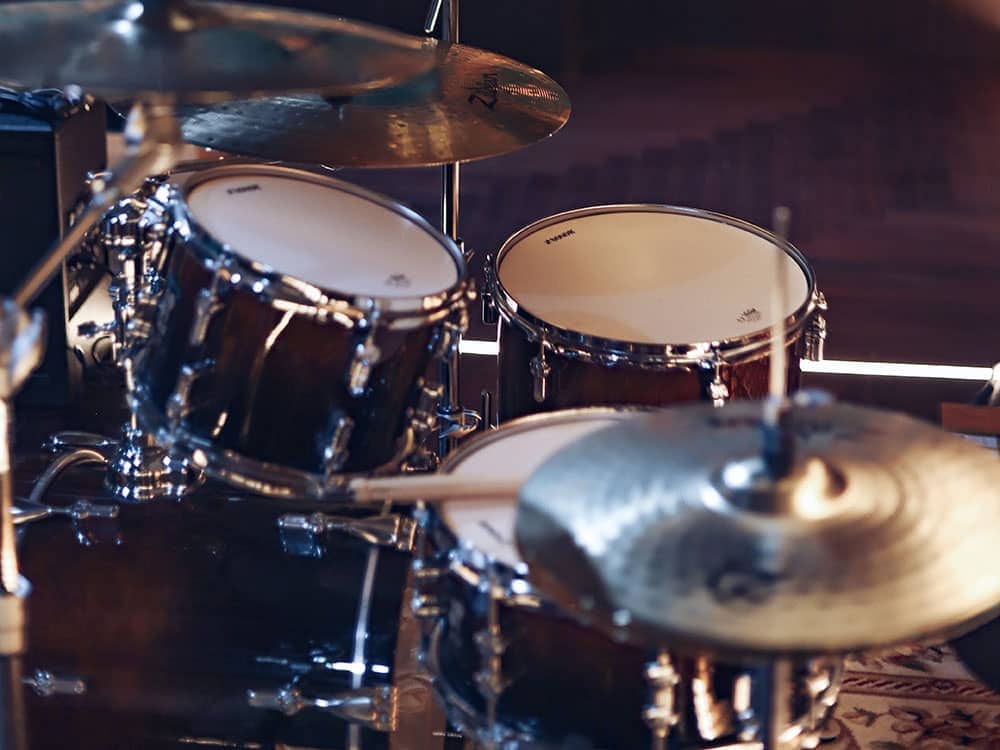1. Ash:
Ash wood is durable and resonant, known for its pronounced grain that contributes to both visual appeal and a unique sound profile. It offers a balanced tone with accentuated highs and lows, making it suitable for a variety of music styles, from rock to funk.
2. Beech:
Beech is a dense, hard wood with a sound that’s both bright and warm. It’s less common than birch or maple, giving a unique sound that’s favored for studio recordings due to its controlled overtones and focused sound.
3. Cherry:
Cherry wood shells are less common but highly prized for their warm, rich tones. They excel in studio settings where their lower fundamental tone and smooth resonance can be fully appreciated, making them a top choice for jazz and acoustic genres.
4. Birch:
Birch is a staple in the drumming world, valued for its bright, cutting sound and excellent projection. It’s a go-to for live performance, offering a high-end punch that can stand out in a full band setting.
5. Maple:
Maple is perhaps the most versatile wood, offering a balanced and warm tone. It’s a favorite among all types of drummers for its adaptability to various genres, from pop to jazz, and its ability to deliver a consistently rich sound.
6. Oak:
Oak shells are heavier and denser, producing a loud and bright sound with a strong attack. Their volume and sustain make them suitable for rock and metal drummers who need their beats to cut through loud guitar riffs.
7. Poplar:
A more budget-friendly option, poplar is often found in beginner and intermediate drum kits. It offers a decent, warm tone, making it a great starting point for new drummers or those practicing at home.
8. Wenge:
Wenge is an exotic wood with a dark look and a deep, earthy tone. Its sound is distinctive, with a notable reduction in overtones. This wood is for drummers who want a unique, low-end focused sound.
9. Jatoba:
Jatoba, or Brazilian Cherry, is hard and dense, providing a strong attack with a brighter tone compared to mahogany. It’s a good choice for drummers who favor a powerful, punchy sound with clarity in the low and mid frequencies.
10. Mahogany:
A classic choice, mahogany offers a vintage vibe with its warm, mellow tones. Its sound is rich and deep, perfect for genres that require a smooth, rounded low-end, like blues and classic rock.
11. Kapur:
Kapur wood is ideal for drummers who want a focused, controlled sound. Its tone is dry and punchy, with an emphasis on low frequencies, suitable for studio work and nuanced playing.
12. Walnut:
Walnut shells provide a naturally EQ’d sound, reducing highs while boosting lows and mids. This creates a warm, dark tone that retains clarity, making it a great choice for a balanced yet deep sound.
13. Hybrids:
Hybrid shells mix different woods, allowing for custom sound characteristics. They can balance warmth with attack, depth with brightness, offering a personalized sound that can adapt to various musical styles.

